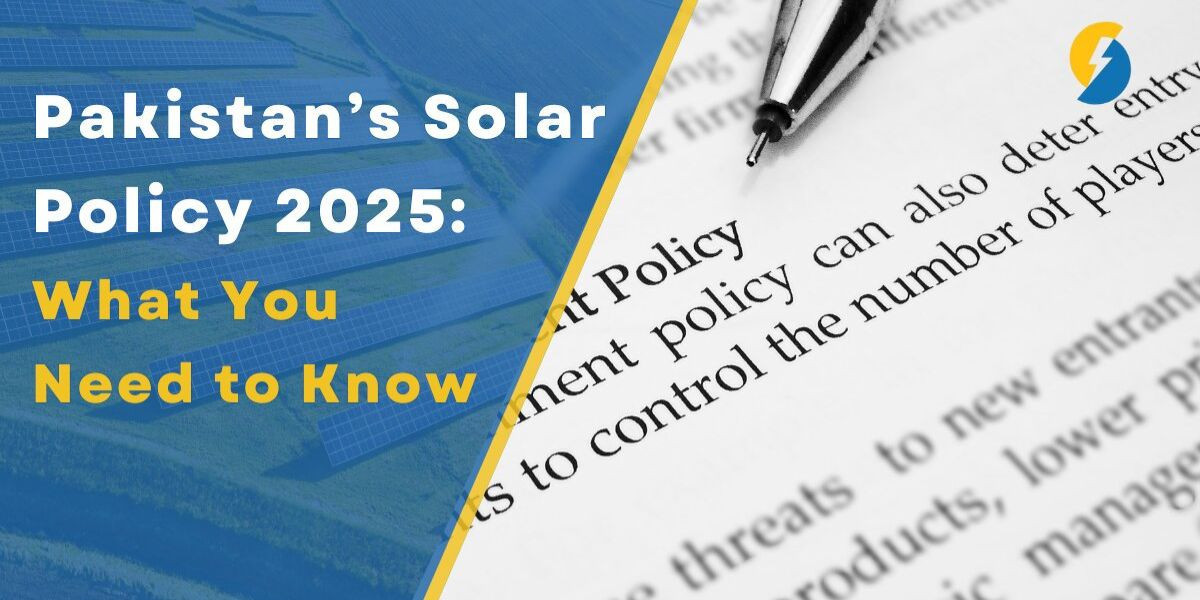Pakistan is witnessing a major transformation in its energy sector, and at the heart of this change lies the ambitious Pakistan’s Solar Policy 2025. As the country battles power shortages, high electricity costs, and a growing need for sustainable development, the government has introduced reforms to make solar energy more accessible, regulated, and aligned with long-term energy goals. Here’s a comprehensive overview of what the 2025 solar policy brings for individuals, industries, and the future of Pakistan’s energy independence.
? Key Highlights of Pakistan’s Solar Policy 2025
Revised Net-Metering Tariffs
One of the most debated changes in the 2025 solar policy is the adjustment in net-metering tariffs. Previously, excess solar energy exported to the grid fetched up to Rs. 27 per unit. Under the new policy, this rate has been reduced to Rs. 10 per unit. While this change is aimed at balancing grid demand and preventing revenue losses, it has raised concerns among homeowners and investors.Support for Existing Users
If you already have a net-metering agreement under the 2015 NEPRA regulations, the new rates won’t affect you until your 7-year term expires. This protection encourages continued confidence among early adopters of solar systems.Reduced Cost of Solar Installations
Due to policy uncertainty and global supply chain factors, solar panel prices in Pakistan have dropped. A 5kW system now averages around PKR 500,000–550,000, while a 10kW setup can cost between PKR 850,000–950,000. Though this helps make solar more affordable, longer payback periods are expected with the lower net-metering rates.Incentives and Tax Benefits
The government continues to waive import duties on solar equipment such as inverters, batteries, and panels. This move ensures that solar technology remains financially viable for residential and commercial users.Provincial Initiatives
Provinces like Khyber Pakhtunkhwa have introduced free solar panel schemes for over 130,000 households, promoting solar adoption in rural areas. Such initiatives reinforce the federal government’s renewable energy vision.Hybrid and Off-Grid Growth
With changes to grid export rates, many users are now shifting towards hybrid solar systems that store energy using batteries. These systems ensure 24/7 energy access and reduce reliance on unpredictable tariff structures.Rising Battery Usage
Falling battery prices globally have led to greater adoption of energy storage in Pakistan. Businesses and affluent homes are installing battery-backed solar systems to ensure consistent power and faster ROI.
⚡ Challenges and Industry Response
Despite its long-term vision, the 2025 solar policy has faced criticism from solar companies and environmental advocates. Many argue that lowering the net-metering rates could discourage solar adoption. In response, the government has initiated further consultations with stakeholders to refine policy implementation and ensure it does not hinder Pakistan’s renewable energy targets.
? The Future of Solar in Pakistan
Pakistan's solar capacity now contributes over 25% of national electricity in peak seasons, a massive leap from just 4% in 2021. With improved policies, smart investments, and hybrid system adoption, the country can continue to move toward energy independence and carbon reduction.
✅ Conclusion
Pakistan’s Solar Policy 2025 represents a critical milestone in the nation’s clean energy roadmap. While changes to net-metering pose challenges, incentives, reduced equipment costs, and technological advancements open new opportunities. The policy encourages users to transition to smarter solar solutions, like hybrid systems, while supporting equitable access across provinces. With ongoing stakeholder engagement and refinements, this policy has the potential to drive a sustainable, affordable, and energy-secure future for Pakistan.







